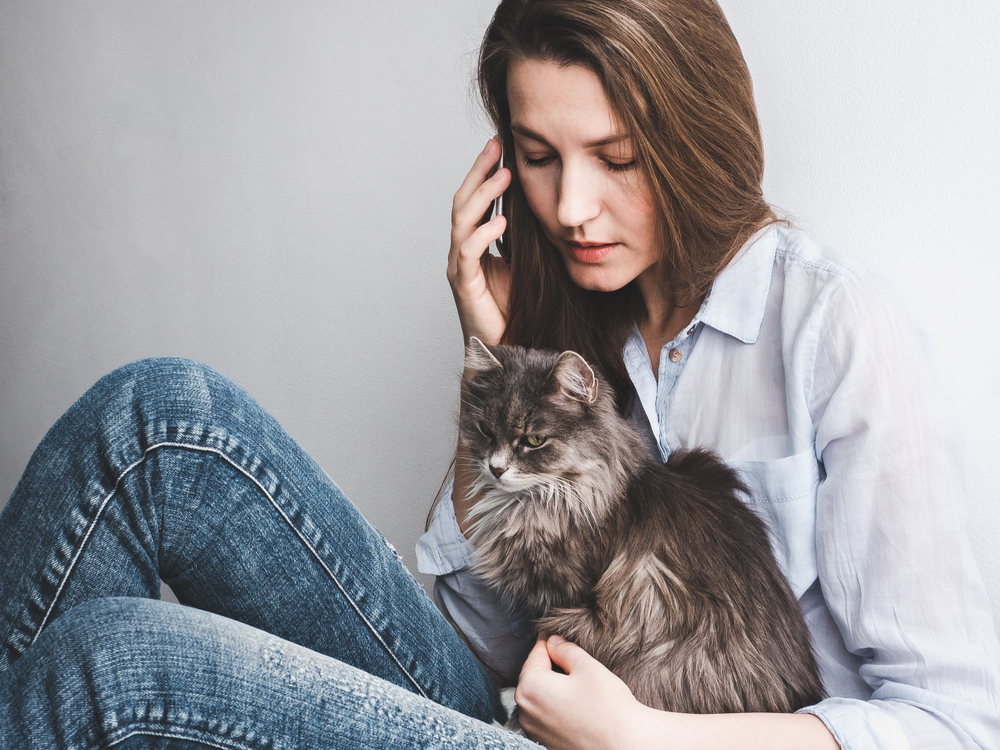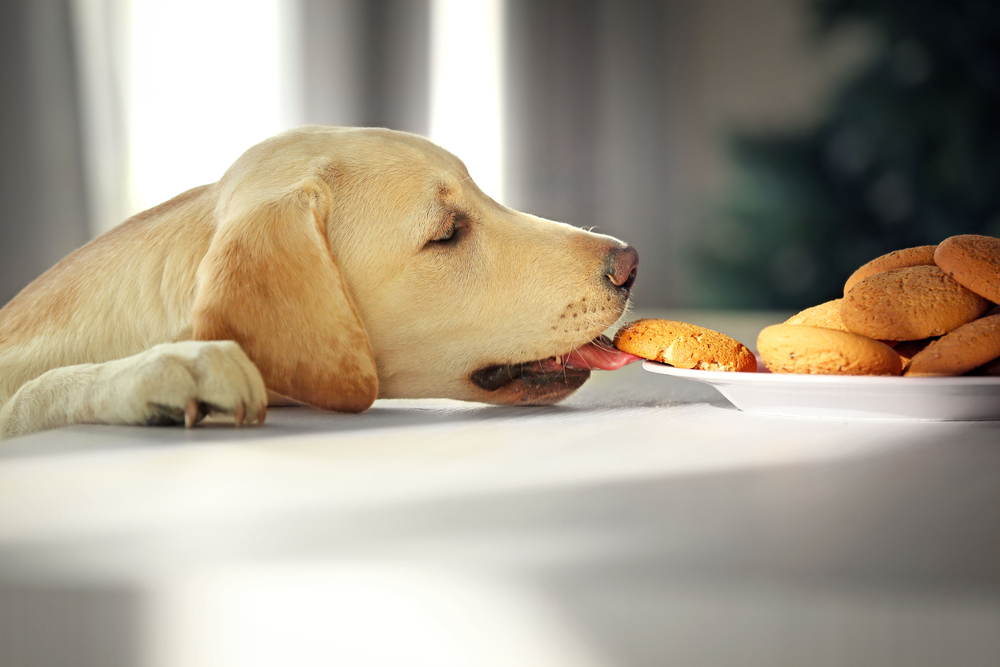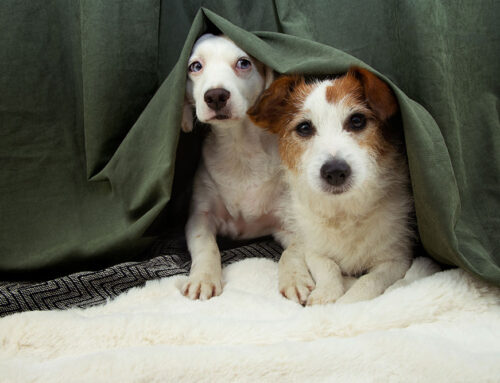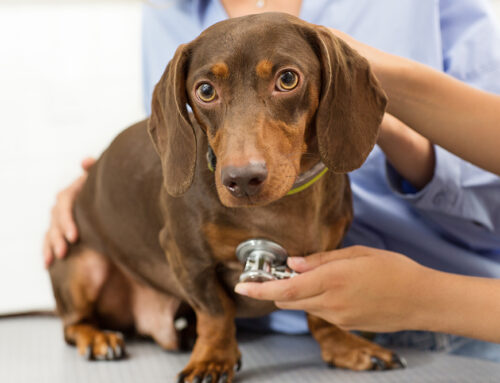Food and household items are common sources of toxins for pets, potentially leading to significant health consequences, including death. Our Animal Clinic of Council Bluffs team doesn’t want your pet to be poisoned, and we provide do’s and don’ts to help you safeguard your four-legged friend.
DO know what items are toxic to pets
Educate yourself on what foods and household items are toxic to pets. Common culprits include:
- Human medications — Any drug, including over-the-counter and prescription medications and supplements, can be toxic to pets. Examples include non-steroidal anti-inflammatory drugs (NSAIDs), acetaminophen, antidepressants, sleep aids, cardiac and blood pressure medications, and attention deficit hyperactivity disorder (ADHD) medications.
- Human food — Pets process foods differently, and many common food items are toxic to them. These include chocolate (especially dark chocolate), grapes and raisins, onions and garlic, macadamia nuts, and xylitol—a common artificial sweetener.
- Plants — Plants commonly found in and around your home pose a toxin threat to your pet. Examples include lilies, azaleas, tulips, autumn crocus, foxglove, and dieffenbachia.
- Household products — Household products, such as cleaning agents, laundry products (including dryer sheets), paint, and paint thinner, are toxic to pets.
- Veterinary products — Many veterinary medications and supplements are chewable products that are tasty to pets. This means your pet could suffer an overdose if they eat too many chews by accident.
- Rodenticides — Many types of rodenticides are on the market and all are toxic to pets, causing issues such as uncontrollable bleeding, seizures, and kidney failure.
- Insecticides — Insecticide ingredients, such as organophosphates, carbamate, and pyrethrins, can be toxic to pets, causing issues such as gastrointestinal (GI) upset, breathing difficulties, muscle tremors, and seizures.
- Garden products — Garden products, such as certain mulch products, fertilizers, soil additives, pesticides, and compost, can be toxic to pets.
DON’T miss the signs your pet is poisoned
You may not actually see your pet ingest a toxin. That means knowing what signs to look for is important so you can seek veterinary attention as soon as possible if your pet is poisoned. Potential pet poisoning signs include:
- Vomiting
- Diarrhea
- Seizures
- Excessive thirst and urination
- Abnormal bruising or bleeding, or finding blood in the urine or feces
- Hyperactivity
- Lethargy
- Lack of coordination
- Impaired mental activity
- Difficulty breathing
- Excessive drooling or panting
DO read the label before sharing food with your pet
When offering a new food or treat to your pet, read the label beforehand to ensure the product doesn’t contain ingredients that may be harmful to them.
DON’T tempt your pet by leaving food on the counter
Many people store certain food items on their counter, but this practice can tempt your pet to counter-surf and potentially ingest a toxic substance. Another good tip is to keep your garbage in sealed containers to prevent dumpster diving.
DO ensure your pet can’t access guests’ belongings
Many people carry pain relievers, such as ibuprofen and acetaminophen, or xylitol-containing gum and candy, in their purses or coat pockets. Ensure your guests’ belongings are in a secure area that your pet can’t access.
DON’T attempt to treat your pet
Some well-meaning owners give their pet human medications in an effort to ease their aches and pains, and inadvertently poison them. Always ask your veterinary team for advice before giving your pet any medication.
DO ensure your pet can’t access your medications
Store your medications securely, preferably on a high shelf behind a latched cabinet door. In addition, when taking medication, go into another room and close the door so your pet can’t snatch the drug if you accidentally drop it.
DON’T have pet-toxic plants in or around your home
Before getting a new houseplant or planting new vegetation around your home, ensure the plant is pet friendly. If you already have a toxic plant growing in your yard, remove the plant or ensure your pet can’t get to the area.
DO read your pet’s drug label
Before giving your pet medication prescribed by your veterinarian, read the label to ensure you administer the correct dose. In addition, never give your cat medication prescribed for your dog, and never give your dog medication prescribed for your cat.
DON’T underestimate your pet
Pets are clever at finding ways to get into cabinets and closets. Use childproof latches to secure dangerous items such as medications, household cleaning agents, and chemicals.
DO know pet toxin first aid

If your pet is exposed to a toxin, knowing how to react can save their life. Pet toxin first aid includes:
- Remaining calm — Try not to panic so you can provide the care your pet needs.
- Removing the toxin — Take the toxic substance away from your pet to prevent further exposure.
- Contacting a veterinary professional — Call our Animal Clinic of Council Bluffs team or Animal Poison Control if you know or suspect your pet has been exposed to a toxin.
- Relaying information — Be prepared to provide important information such as your pet’s age, weight, and breed, what they ingested, when they ingested the toxin, how much they ingested, and what signs are present. If possible, have the toxin label handy so you can relay the active ingredients and product concentration.
- Collecting a sample — If your pet vomits, collect a sample in case our team needs to run tests.
- Not inducing vomiting — Don’t induce vomiting or give your pet home remedies, such as milk, vegetable oil, or salt, because that could further harm them.
Following these do’s and don’ts should help reduce your pet’s toxin exposure risk. If you know or think your pet has been exposed to a toxin, contact our Animal Clinic of Council Bluffs team so we can treat them appropriately.






Leave A Comment